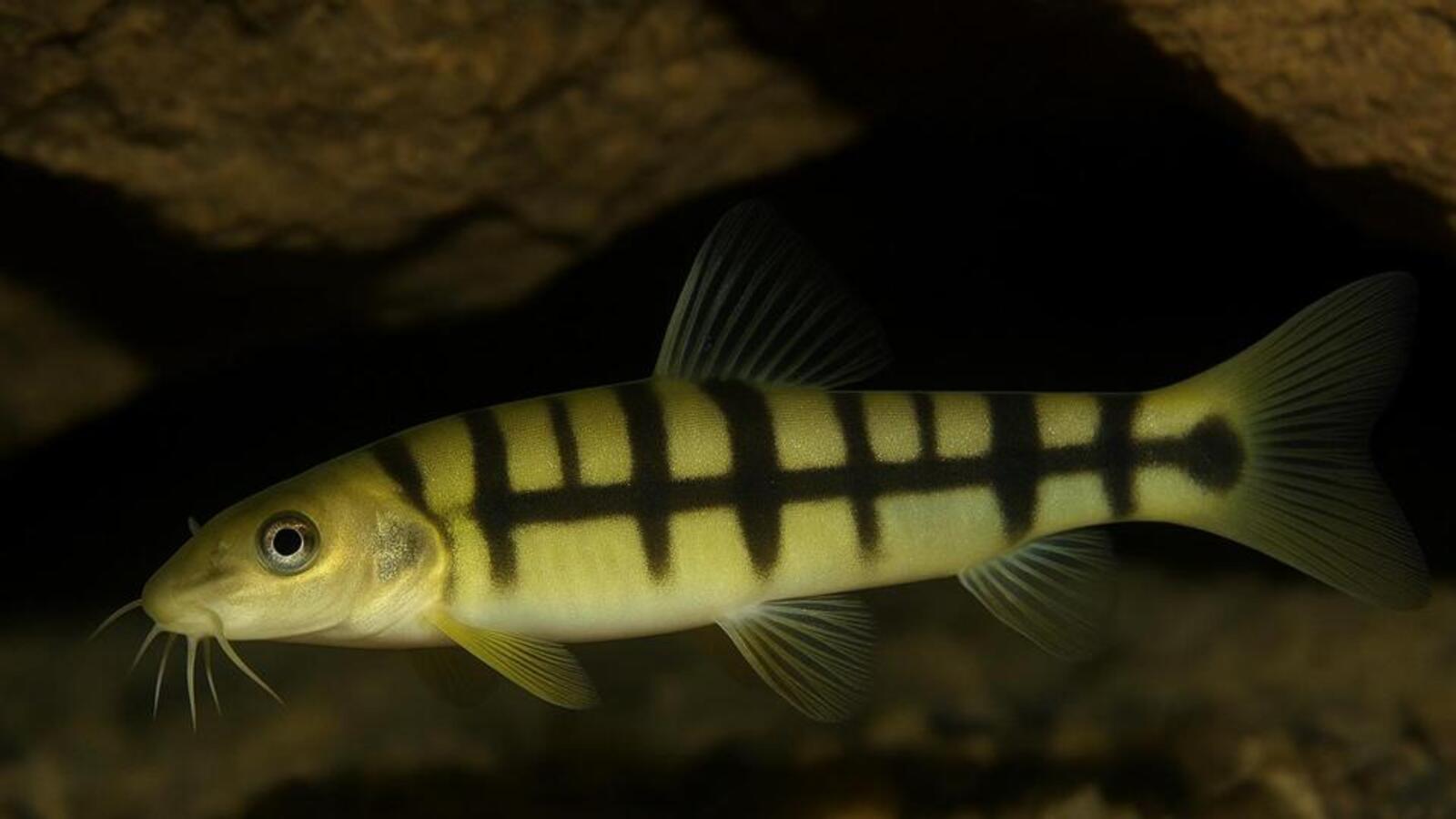Context:
A new species of cave-dwelling fish, Schistura densiclava, has been discovered in Krem Mawjymbuin, a limestone cave in Meghalaya. The discovery was recently published in the Journal of Fish Biology, a peer-reviewed international journal.
About Schistura densiclava:
Schistura densiclava is a bottom-dwelling loach belonging to the Nemacheilidae family. It was found in a cool, fast-flowing stream roughly 60 metres inside the cave, where water temperature remains at 18°C and oxygen levels are low.
· The fish has a pale yellow-green body with 14–20 black or greyish bars.
· A thick dark stripe near the dorsal fin gives the species its name – densiclava (Latin for “dense stripe”).
· The species shows sexual dimorphism: males are slimmer with puffier cheeks and irregular patterns, while females are bulkier with consistent markings.
· It retains pigmentation and eyesight, a trait unusual for cave-dwelling species.
Habitat and Ecology:
The species was discovered in Krem Mawjymbuin, one of Meghalaya’s most inaccessible cave systems. The cave lies in a karst landscape, formed by the gradual dissolution of limestone and dolomite, making it ideal for such cave biodiversity.
· The cave ecosystem remains undisturbed due to seasonal inaccessibility and dense forest cover.
· S. densiclava was found exclusively in the cave’s interior, suggesting a high level of habitat specialisation, although it is not a full troglobite.
About Troglophile Species:
Unlike fully cave-adapted (troglobitic) species such as Schistura papulifera or Neolissochilus pnar, S. densiclava is classified as a troglophile:
· Troglophiles are species that can live and reproduce in both subterranean (cave) and surface (epigean) environments.
· The fish’s ability to retain vision and colour shows it is not yet fully adapted to cave life, though its exclusive presence inside the cave suggests a possible evolutionary transition.
Biodiversity Significance:
This is the sixth cave-dwelling fish species recorded from Meghalaya and adds to the broader inventory of endemic aquatic species found in the region. Meghalaya now represents a biodiversity hotspot for cave fauna, with over 1,700 documented caves, many of which remain unexplored.
· The discovery of S. densiclava reaffirms the ecological value of karst cave systems in Northeast India.
· Genetic analysis confirmed that it is a distinct and previously undescribed species, likely endemic to this cave system.
Conservation and Cultural Context:
Krem Mawjymbuin gained public attention in 2024 due to restrictions placed on religious worship inside the cave by local authorities. It is a limestone cave located about 15 km from Mawsynram, near Sohra (Cherrapunji) in East Khasi Hills district, Meghalaya.
· The minimal human activity in the cave has helped maintain a pristine environment.
· Such measures highlight the need for balancing ecological preservation with cultural practices, especially in ecologically fragile zones.
Conclusion:
The discovery of Schistura densiclava offers a rare glimpse into the hidden biodiversity of Meghalaya’s caves. As more cave systems are explored, such findings can deepen our understanding of evolution, species adaptation, and the need for sensitive conservation strategies. It also underscores the importance of protecting under-researched ecosystems through science-driven and community-sensitive approaches.







